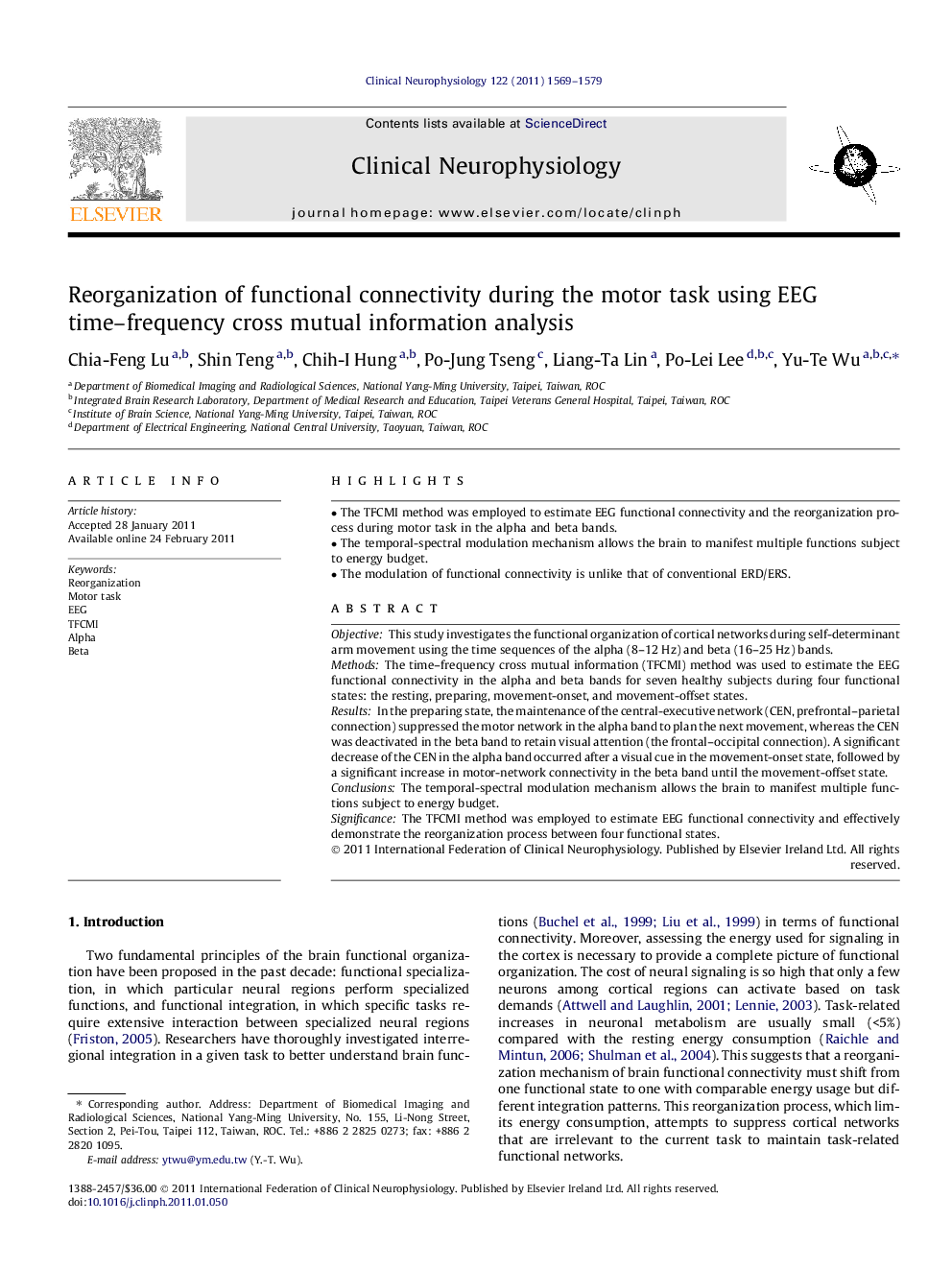| Article ID | Journal | Published Year | Pages | File Type |
|---|---|---|---|---|
| 3044021 | Clinical Neurophysiology | 2011 | 11 Pages |
ObjectiveThis study investigates the functional organization of cortical networks during self-determinant arm movement using the time sequences of the alpha (8–12 Hz) and beta (16–25 Hz) bands.MethodsThe time–frequency cross mutual information (TFCMI) method was used to estimate the EEG functional connectivity in the alpha and beta bands for seven healthy subjects during four functional states: the resting, preparing, movement-onset, and movement-offset states.ResultsIn the preparing state, the maintenance of the central-executive network (CEN, prefrontal–parietal connection) suppressed the motor network in the alpha band to plan the next movement, whereas the CEN was deactivated in the beta band to retain visual attention (the frontal–occipital connection). A significant decrease of the CEN in the alpha band occurred after a visual cue in the movement-onset state, followed by a significant increase in motor-network connectivity in the beta band until the movement-offset state.ConclusionsThe temporal-spectral modulation mechanism allows the brain to manifest multiple functions subject to energy budget.SignificanceThe TFCMI method was employed to estimate EEG functional connectivity and effectively demonstrate the reorganization process between four functional states.
► The TFCMI method was employed to estimate EEG functional connectivity and the reorganization process during motor task in the alpha and beta bands. ► The temporal-spectral modulation mechanism allows the brain to manifest multiple functions subject to energy budget. ► The modulation of functional connectivity is unlike that of conventional ERD/ERS.
